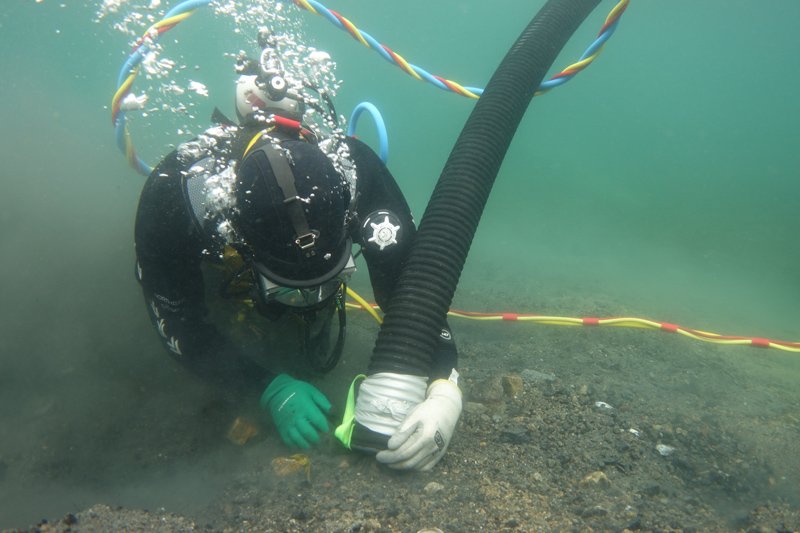Typical Applications of a Diver Operated Dredge
A Diver Operated Dredge is a specialized piece of underwater equipment used for dredging operations, typically operated by a professional diver. Unlike large, vessel-mounted dredges, these compact, handheld or towed units are designed for precision dredging in confined or shallow water areas. They are commonly powered by hydraulics or pneumatics and are equipped with a suction hose and a cutting head to loosen and remove sediment or debris from the seabed.
- Marina Maintenance: Diver Operated Dredges are often used to clear silt, sand, and debris from marinas and boat docks, ensuring safe and navigable waterways for vessels.
- Underwater Construction: In projects such as bridge, pier, or pipeline construction, these dredges are used to excavate or prepare the seabed for foundations or to bury underwater structures.
- Environmental Cleanup: They are employed in environmental remediation projects to remove contaminated sediments or debris from water bodies.
- Aquaculture: In fish farms or aquatic cultivation areas, diver-operated dredges help maintain clean and healthy environments by removing excess feed, waste, and other organic materials.
- Archaeological Excavation: Underwater archaeologists use these dredges to carefully excavate and uncover historical artifacts or shipwrecks without causing damage.
Limitations of Diver Operated Dredge
- Depth Limitation: The operational depth is limited by the diving capabilities of the operator, usually restricted to relatively shallow waters.
- Limited Capacity: These dredges are not suitable for large-scale dredging projects due to their smaller size and lower sediment removal capacity.
- Visibility: Underwater visibility can be a challenge, affecting the precision and efficiency of dredging operations.
- Safety Concerns: Diving operations carry inherent risks, including decompression sickness, entanglement hazards, and equipment malfunctions.
Disposal of Dredged Material
The disposal of dredged material is a critical aspect of the dredging process and is governed by environmental regulations. The material can be categorized into three main types: uncontaminated, slightly contaminated, and heavily contaminated.
- Uncontaminated Material: This can be used for beneficial purposes such as beach nourishment, land reclamation, or as construction material.
- Slightly Contaminated Material: It may be treated and then used for similar purposes as uncontaminated material or disposed of in designated containment areas.
- Heavily Contaminated Material: This requires careful handling and is typically disposed of in secure, regulated landfill sites or treated using advanced methods such as solidification, stabilization, or thermal treatment before disposal.
In conclusion, Diver Operated Dredges are versatile tools for precise underwater dredging tasks. Their applications span various industries, from marine maintenance to environmental cleanup. However, their usage is limited by factors such as operational depth and sediment capacity. Proper disposal of dredged material is essential to minimize environmental impact and comply with regulations.
